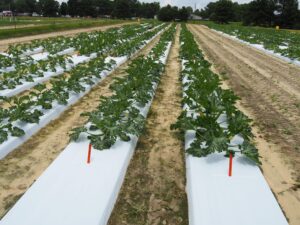2020 Zucchini Squash Cultivar Evaluations are Published
go.ncsu.edu/readext?795195
en Español / em Português
El inglés es el idioma de control de esta página. En la medida en que haya algún conflicto entre la traducción al inglés y la traducción, el inglés prevalece.
Al hacer clic en el enlace de traducción se activa un servicio de traducción gratuito para convertir la página al español. Al igual que con cualquier traducción por Internet, la conversión no es sensible al contexto y puede que no traduzca el texto en su significado original. NC State Extension no garantiza la exactitud del texto traducido. Por favor, tenga en cuenta que algunas aplicaciones y/o servicios pueden no funcionar como se espera cuando se traducen.
Português
Inglês é o idioma de controle desta página. Na medida que haja algum conflito entre o texto original em Inglês e a tradução, o Inglês prevalece.
Ao clicar no link de tradução, um serviço gratuito de tradução será ativado para converter a página para o Português. Como em qualquer tradução pela internet, a conversão não é sensivel ao contexto e pode não ocorrer a tradução para o significado orginal. O serviço de Extensão da Carolina do Norte (NC State Extension) não garante a exatidão do texto traduzido. Por favor, observe que algumas funções ou serviços podem não funcionar como esperado após a tradução.
English
English is the controlling language of this page. To the extent there is any conflict between the English text and the translation, English controls.
Clicking on the translation link activates a free translation service to convert the page to Spanish. As with any Internet translation, the conversion is not context-sensitive and may not translate the text to its original meaning. NC State Extension does not guarantee the accuracy of the translated text. Please note that some applications and/or services may not function as expected when translated.
Collapse ▲
2020 Zucchini Squash Cultivar Evaluations at the Central Crops Research
Station in Clayton, NC
Summer squash ranks among the top 10 vegetables grown in North Carolina with Cleveland County in south central North Carolina producing the greatest acreage of squash in the state. Summer squash remains an important crop to North Carolina producers as the state is ranked 5th among those states that produced the crop nationwide in 2019. In an effort to remain competitive in the marketplace and maximize profitability most growers seek to grow squash cultivars that will provide them with the highest yields and greatest overall fruit quality.
The zucchini market in North Carolina has typically been supplied with a fruit that is medium green in color; however, some markets have seen increased demand for cultivars that produce a darker green fruit. Summer squash plantings in North Carolina typically experience higher incidence of disease and insect pressure since they are harvested in the fall when environmental factors favor increased presence of these plant pests and pathogens. In 2020 the field study was planted on June 2 and we began harvesting on July 8. The squash were rated for marketable and nonmarketable yields, for early and late production, and for consistency of production throughout the harvest period. Visit the Cucurbit cultigen trials page to view field studies on melons, pumpkins, and squash from previous years.


